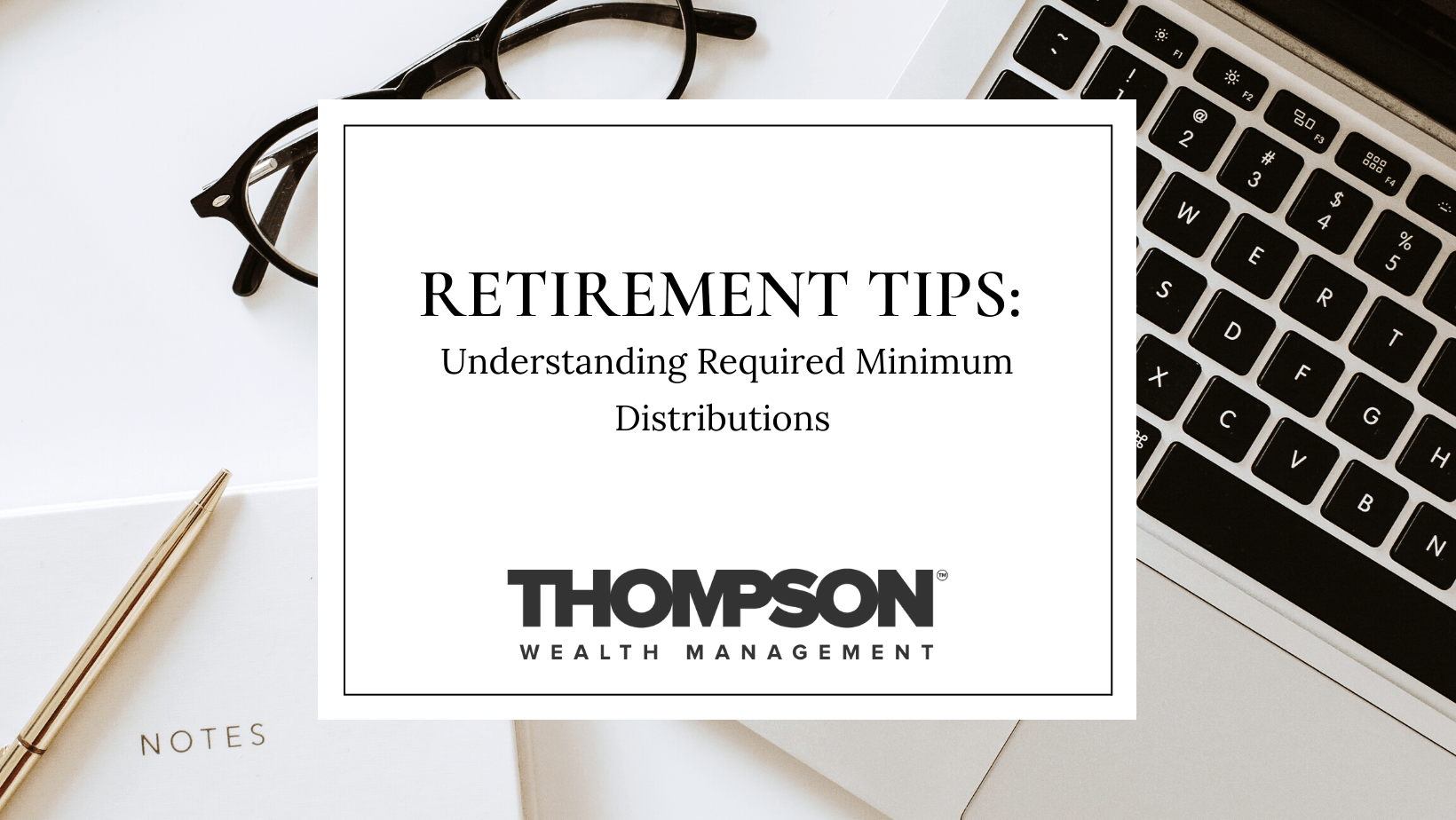
Retirement Tips: Understanding Required Minimum Distributions
If you’ve been diligently saving money for your retirement, congratulations! Building your nest egg is a big deal, and the more effort you put into your planning now, the more likely you’ll be to enjoy your retirement years without worry.
But saving money is only half the battle. A good retirement plan also means figuring out the best way to use all the money you’ve saved once you retire. Taking distributions, or withdrawals, from your retirement account comes with its own set of rules, and you’ll want to get familiar with them to make sure you’re making the best possible choices about your money.
What Are Required Minimum Distributions?
Many people are surprised to learn that they must take distributions from their retirement accounts when they reach a certain age. Your required minimum distribution (RMDs) is the amount of money you are forced to take out of your qualified retirement account each year. RMDs are enforced by the IRS and are designed to keep people from hoarding money in tax-advantaged accounts — the government would like to collect taxes on that money at some point.
If you turn 70 before July 1, 2019, you must begin to take RMDs from your retirement account at age 70½. If you turn 70 on July 1, 2019 or later, you must begin to take RMDs at age 72.
Most, but not all, retirement accounts are subject to RMD rules. If you have any of the following, you’ll have to make withdrawals once you reach age 70½ or 72:
- Traditional IRA
- SEP IRA
- SIMPLE IRA
- 401(k)
- 403(b)
- 457 plans
- Profit-sharing plans
- Thrift Savings Plan
- Other defined contribution plans
The only type of retirement account that is not subject to RMD rules is a Roth IRA. In that case, distributions are only required upon the death of the account holder.
If you fail to make withdrawals from your qualified retirement account according to RMD rules, you could be subject to a severe tax penalty: a 50% excise tax on the amount you failed to distribute.
Calculating Your Required Minimum Distribution
Each year, you’ll need to calculate your RMD, to do this, you’ll take your IRA balance as of December 31 of the previous year and divide it by your distribution period. The distribution period is a number determined by the IRS and based on your current age. You can find it on the IRS RMD worksheet. You can also use an RMD calculator to get a quick overview of your distributions over the entire course of your retirement.
When you complete the math above, the amount you get is what you need to withdraw and pay taxes on for the current tax year. This amount will be different each year, depending on your age and the amount you have left in your retirement account.
Planning for Required Minimum Distributions
For many people, RMDs may not have a huge impact on your retirement plan. You simply take out at least the amount required, pay taxes on it, and you’re done. But if you have several different retirement accounts, you’ll need to track your RMDs for all of them, which can make planning more complex. What’s more, RMDs can force you to pay more in taxes that you may have been planning on, so it’s important to have a clear picture of all of your assets as you convert them to income while you’re retired.
In addition to increasing your tax burden during retirement, RMDs can also impact your Medicare premiums. For those with higher incomes, Medicare Part B and Part D plans are adjusted so that you pay more in premiums once your income reaches a certain amount. These IRMAA charges can sneak up on you if your RMDs push your income beyond $88,000 per year for single filers or $176,000 for married filers. If this happens to you, you’ll need to plan ahead for higher Medicare costs.
RMDs can also force you to sell off some investments at a loss if you’re not careful. To avoid this situation, it’s a good idea to make sure that a portion of your IRA is in a stable, fixed investment that you can easily sell to when you need to cash out. This will help you avoid locking in losses in down years.
Many people need their RMDs to live on throughout retirement, so they don’t feel concerned by the rule. But if you have a pension or other income and would prefer to avoid taking RMDs, you might consider converting some of your traditional retirement fund into a Roth IRA. You’ll still have to pay taxes on the money immediately with a Roth conversion, but this may still be worthwhile if you’re looking for a way to preserve your estate for your heirs. Likewise, the temporary increase in your income as a result of a Roth conversion could push you into an extra IRMAA charge for Medicare, so it’s a good idea to speak to a professional to plan when to complete a Roth conversion to make sure you can afford it. If you’re still working, you may consider opening a Roth IRA to make sure that some of your retirement funds are free from required minimum distributions in the future.
Finally, if you’re past the age for RMDs but are still working, you don’t have to take distributions from your employer-sponsored 401(k). This only applies to the retirement plan for your current employer, but many people take advantage of this exception if they are still on the job.
Are your retirement funds set up in the best way to meet your future goals? If you’re uncertain about the impact that required minimum distributions will have on your plans, we can help. Contact us for retirement planning help today!








